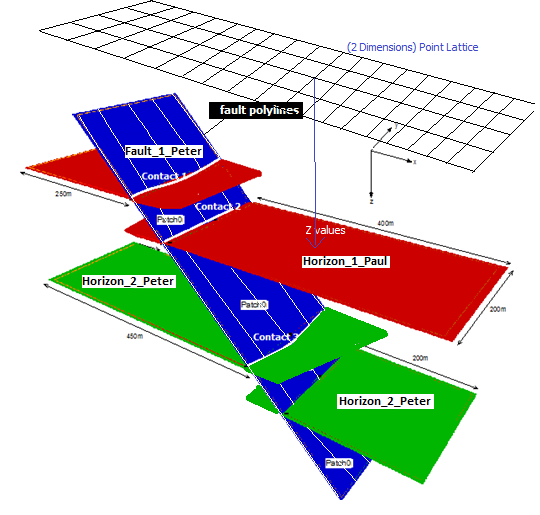9.3.1.2.1 Creation of New Surface Representations
| Topic Version | 1 | Published | 09/11/2015 | |
| For Standard | RESQML v2.0.1 | |||
Software B is used to do structural modeling (surface modeling). The information in EPC_0 is used to consistently transfer to Software B (and potentially to additional software packages) all the acquired representations and populate Software B's internal data model (Figure 9.3.1.2.1-1).
A user can manage all of this information in Software B with only one constraint: Software B MUST keep the RESQML UUIDs (i.e., as an attribute) of the data objects it instantiates.
If Software B can apply surface modeling on 2D grids and polyline sets, it will have access to the detailed information about the topology and the geometry of these representations and can create triangulated surfaces and define contacts as polylines (Figure 9.3.1.2.1-2).


In this case, after having created these new triangulated representations for both Paul's and Peter's interpretations, Software B adds to the previous RESQML data by linking these new representations to the existing interpretations using the UUID and data object reference mechanism discussed above.
Software B can export only the triangulated surface sets stored in an EPC file named EPC_1, which references the elements in EPC_0.